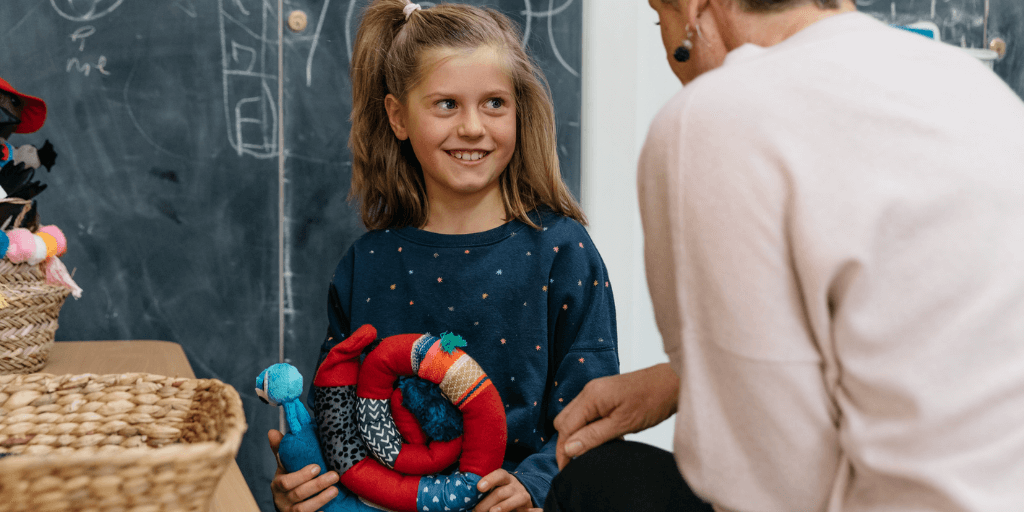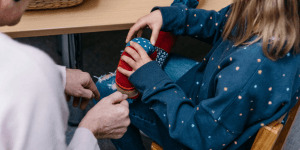
Sharing Stories with Children in Our Work
This ‘Sharing Stories with Children in Our Work’ blog article was written by Angela Weller and Chris Cussen, at the Australian Childhood Foundation.
Humans think in stories and we try to make sense of the world by telling stories. The uniqueness of us as humans is our ability to create and believe fiction. Our communication systems enable us to create new realities.
– Yuval Noah Harari
Stories are important in our experience and culture, and in particular the lives of children. When we think about a story that is important to us, it will have meaning and significance in how we make sense of our world. Stories in the therapeutic work we do with children offer multiple opportunities for growth imagination, fun, expression and healing from the pain they have experienced through complex relational trauma.
They help in the formation and growth of imagination by introducing new ideas into a child’s therapy, fantastical worlds, invented characters, magical adventures. Through imagery, stories can expand a child’s world. The children we work with often live in worlds that are narrow and constricted in experience. Within a story, they are introduced to an array of settings and characters that show them experiences such as courage, goodness and love

“Stories give children the necessary ethos, in which to experience the depth and wonder of the world, and the story to which they belong”.
– Sarah Clarkson
When children read stories about feelings, it can support the understanding and acceptance of their own internal states. They can be encouraged to place themselves within the stories and experiences of others, to develop empathy and care. Children are given words to both understand the world and transform it, try out new roles for themselves and others. They can trust a world view expressed in a story, they can adapt it to suit themselves.
Children can learn problem solving, alternative thinking, and practice their own and possible new self statements and representations. They can therefore become actively engaged in collaborations of new identities and ways of being in the world. When a child processes a story, they can safely reveal, their own implicit thoughts about their problems. This can be a significant resource for children whose silent and painful narratives shape so much about their lives and relationships.
Stories are gentle. They don’t necessarily demand a response. When we hear the soothing familiarity of a much loved story, we are comforted by its rhythm, rhyme repetition and imagery. Imagine the safety a frightened child feels in this experience. Imagine how much comfort is felt by a child sharing this with someone who loves and cares for them. Children and their parents/carers are supported to join and discover a sense of this connection together in our work.
Stories have a structure, they know the way, which can be helpful for abused children in their often chaotic worlds. They define a problem, search for helpful resources, a resolution and integration of that message. This can represent an imaginative model for change in a child’s world.
Our new Big Tree Therapeutic Dolls workshop introduces the application of storytelling into the healing experience for children in addition to the other playful and sensory modalities. These beautifully written and illustrated stories follow the adventures of the folk using their embedded themes to explore the stories that children bring to us. The exploration of these themes, and connected narratives are integral to the recovery from trauma for children
The use of these stories is intimately tied to the work with the dolls, and is a beautiful expansion on the previous workshop. This gentle method of intervention will stimulate reflection, conversation and play with children, helping them to feel more connected to others in their own stories. Stories are threads woven into the fabric of childhood. In our work and in these new workshops the threads of children’s lives are explored and transformed.
